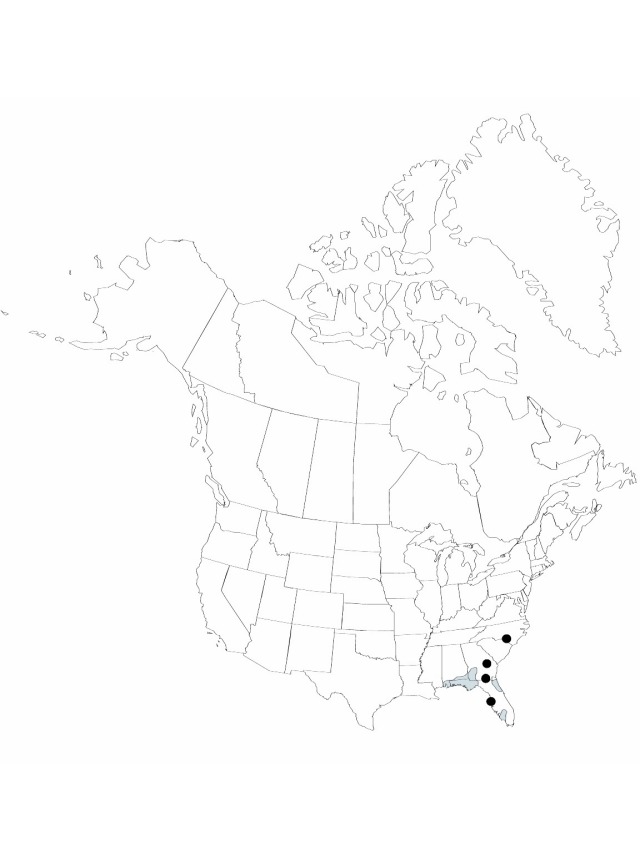Eriocaulon lineare
Flora of the Southeastern United States 236, 1328. 1903.
Herbs, perennial, 6–20 cm (–80 cm when submersed). Leaves linear-attenuate, 1–10 cm (–20 cm when submersed), apex filiform. Inflorescences: scape sheaths mostly shorter than leaves in emergents, exceeding them in drier sites; scapes linear, 1 mm wide, 4–7-ribbed; heads (young or mature) very pale, hemispheric to nearly globose, rarely short-cylindric, 4–10 mm wide, soft, flattened when pressed; receptacle glabrous; involucral bracts sometimes squarrose, obscured by reflexed bracteoles and flowers of mature heads, straw-colored, orbiculate to ovate, 2–2.5 mm, margins entire, apex rounded, with white, club-shaped hairs; receptacular bracts and bracteoles pale except for grayish midzone, obovate to cuneate, 2 mm, margins entire, apex acute, ciliate, distal abaxial surfaces with white, club-shaped hairs. Staminate flowers: sepals 2, grayish, oblong-linear, curvate, 1.5–2 mm, apex acute with white, club-shaped hairs; androphore club-shaped; petals 2, pale, triangular, 0.5 mm, ciliate, hairs club-shaped; stamens 4; anthers black. Pistillate flowers: sepals 2, basally pale, darkening distally to grayish, gray-green, or gray-brown, narrowly oblong-obovate, curved, 2 mm, apex rounded, abaxially with white, club-shaped hairs; petals 2, yellow-white, broadly spatulate, flat, 1.5–2 mm, apex rounded, abaxially with white hairs, adaxially with white or clear hairs; pistil 2-carpellate. Seeds dark red-brown, ovoid or ellipsoid, 0.5–0.75 mm, faintly rectangular-reticulate, often papillate in lines.
Phenology: Flowering mostly summer–fall.
Habitat: Sandy or peaty shores, hypericum ponds, wet savanna, southern coastal plain terraces
Elevation: 0–100 m
Distribution

Ala., Fla., Ga., N.C.
Discussion
Eriocaulon lineare closely resembles E. texanum, although it has paler bracts and flowers and a glabrous (rather than pilose) receptacle. Eriocaulon lineare blooms later and is most common in the margins or shallows of ponds, rather than in the sphagnous bogs favored by E. texanum.
Selected References
None.